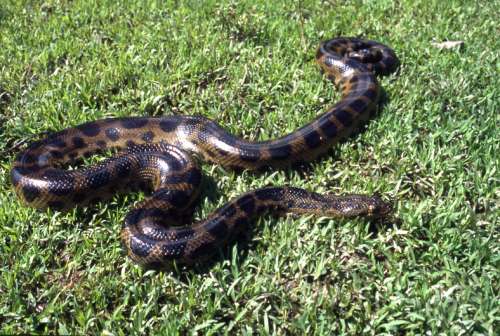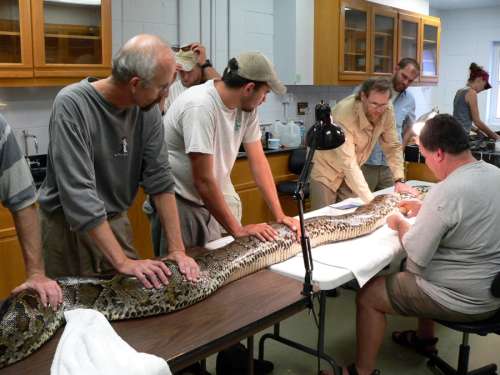Feds propose banning giant snakes
Today, the U.S. Fish & Wildlife Service announced plans to ban the importation and interstate transport of nine species of giant snakes. It’s a good idea, but a little like closing the barn door after the horse — or in this case, the pythons and anacondas — got loose.



Over the past 30 years, about a million of these menacing snakes have been imported into the United States. Today, domestic breeders of some of the species currently produce more of the animals than move through the import trade.
Of course, even five-meter-long anacondas wouldn’t be a problem if pet owners kept their serpents caged. But invariably, over the years, some slithered loose — or were released by owners who found their reptile more than they could handle. Today, many thousands nest wild in Florida’s suburban yards, parks and the Everglades.
Three months ago, a U.S. Geological Survey report offered a rough census of the snakes and argued that owing to their numbers, lack of natural predators and demonstrated ability to thrive — and sometimes reproduce — in the wild, these pests pose a clear and present ecological threat. Oh yeah, and a potential safety risk to taxpaying residents.
It appears the USGS scientists made their case fairly persuasively. The new ban, details of which are expected within a few weeks, would prohibit importation of these alien species and their human-facilitated movement across state lines.
That means someone couldn’t drive down to Texas and buy a baby python and then legally bring it home to Maryland. It would even become illegal to tote a long-owned boa across states lines — from New York to New Jersey, for instance — when someone moved.
Within-state sales would still be permitted, a F&WS spokesperson acknowledged. So snake owners and pet shops are not being targeted by the proposed legislation.
Interior Secretary Ken Salazar today implored owners to not release pets into the wild: “People may think that this is a convenient and humane way to be rid of unwanted animals, but as in the case of pythons and other constrictors, it can lead to devastating consequences for local wildlife populations and the ecosystems they depend on.” And, of course, pet-owner releases also explain how some renegade aquatic species, like the lionfish and rogue alga Caulerpa, became established thousands of kilometers from their home waters.
The giant snakes to be targeted by the proposed ban: Burmese pythons, northern African pythons, southern African pythons, reticulated pythons, green anacondas, yellow anacondas, Beni or Bolivian anacondas, DeSchauensee’s anacondas and boa constrictors.






